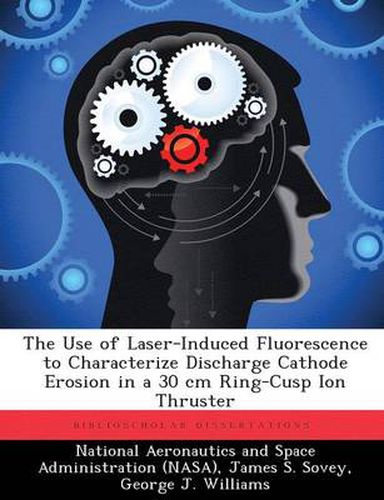Readings Newsletter
Become a Readings Member to make your shopping experience even easier.
Sign in or sign up for free!
You’re not far away from qualifying for FREE standard shipping within Australia
You’ve qualified for FREE standard shipping within Australia
The cart is loading…






This title is printed to order. This book may have been self-published. If so, we cannot guarantee the quality of the content. In the main most books will have gone through the editing process however some may not. We therefore suggest that you be aware of this before ordering this book. If in doubt check either the author or publisher’s details as we are unable to accept any returns unless they are faulty. Please contact us if you have any questions.
Relative erosion rates and impingement ion production mechanisms have been identified for the discharge cathode of a 30 cm ion engine using laser-induced fluorescence (LIF). Mo and W erosion products as well as neutral and singly ionized xenon were interrogated. The erosion increased with both discharge current and voltage and spatially resolved measurements agreed with observed erosion patters. Ion velocity mapping identified back-flowing ions near the regions of erosion with energies potentially sufficient to generate the level of observed erosion. Ion production regions downstream of the cathode were indicated and were suggested as possible sources of the erosion causing ions.
$9.00 standard shipping within Australia
FREE standard shipping within Australia for orders over $100.00
Express & International shipping calculated at checkout
This title is printed to order. This book may have been self-published. If so, we cannot guarantee the quality of the content. In the main most books will have gone through the editing process however some may not. We therefore suggest that you be aware of this before ordering this book. If in doubt check either the author or publisher’s details as we are unable to accept any returns unless they are faulty. Please contact us if you have any questions.
Relative erosion rates and impingement ion production mechanisms have been identified for the discharge cathode of a 30 cm ion engine using laser-induced fluorescence (LIF). Mo and W erosion products as well as neutral and singly ionized xenon were interrogated. The erosion increased with both discharge current and voltage and spatially resolved measurements agreed with observed erosion patters. Ion velocity mapping identified back-flowing ions near the regions of erosion with energies potentially sufficient to generate the level of observed erosion. Ion production regions downstream of the cathode were indicated and were suggested as possible sources of the erosion causing ions.